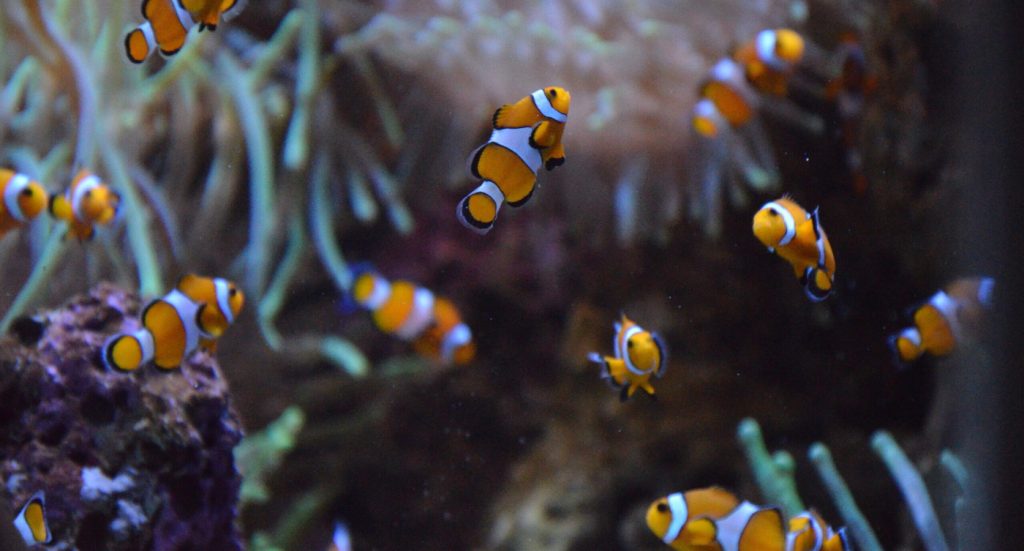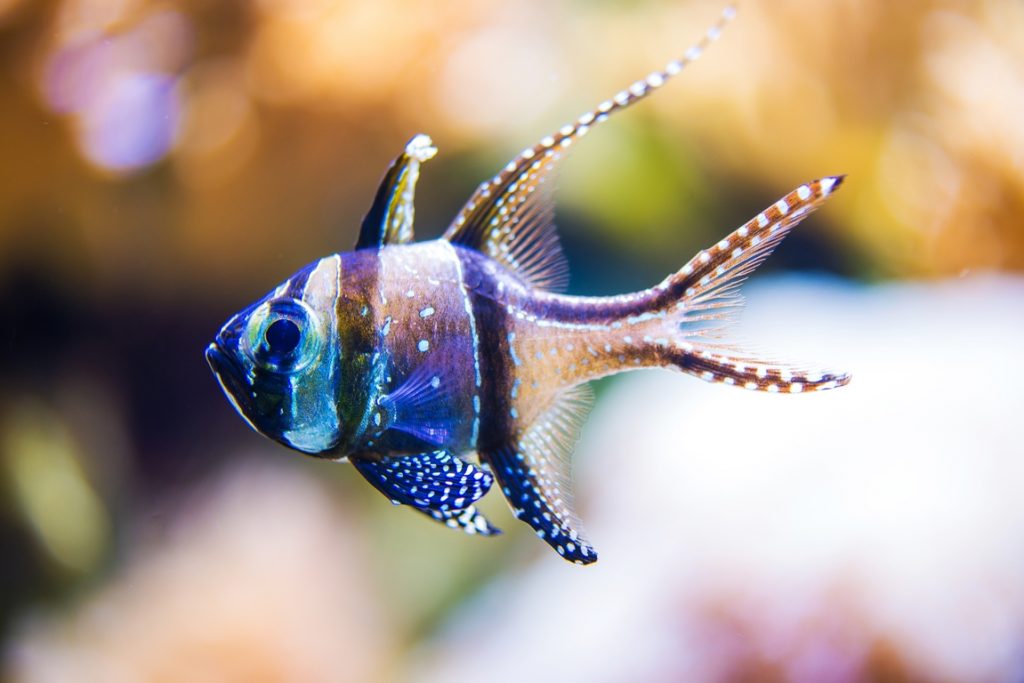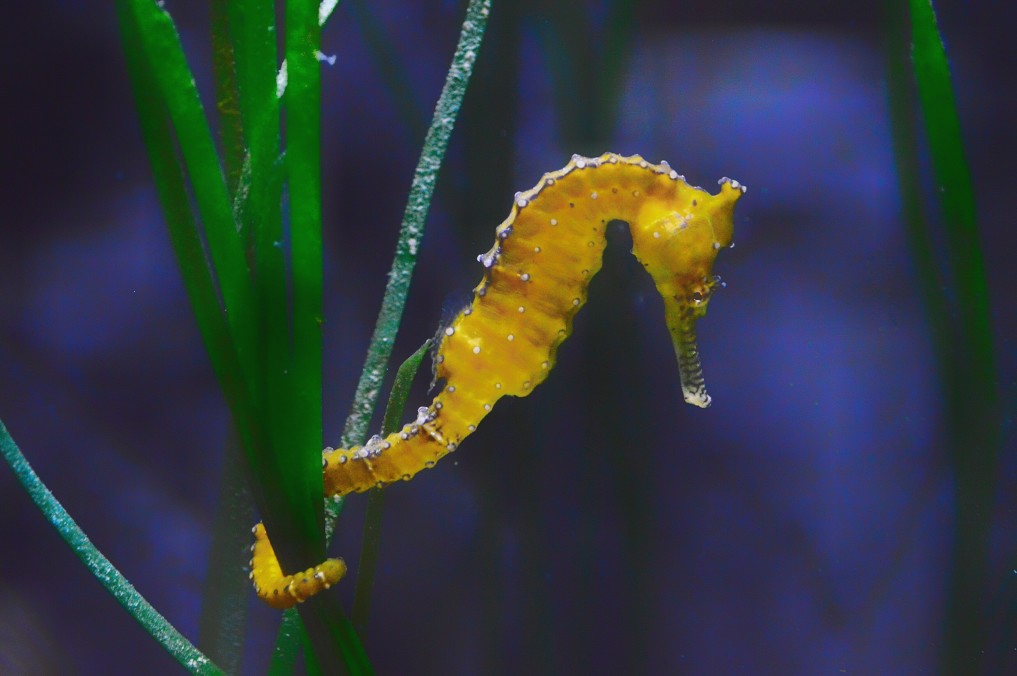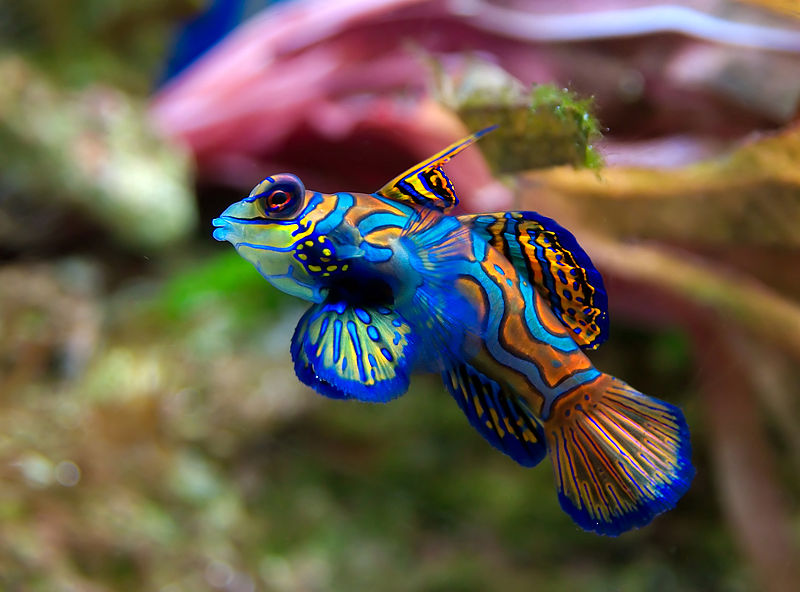The dirty little secret of the marine (saltwater) aquarium trade is that many of the fish and corals available have been caught or collected from the wild.
Only a limited number of species can be bred in captivity. Even among these, only a handful can be bred in a home aquarium rather than a specialised breeding setup or facility.
In this blog post, we look at a handful of our favourite marine aquarium fish that can be sustainably bred in captivity.
The common clownfish
Yup, the most widely sought after marine aquarium fish is one of the species that can be bred in captivity! Clownfish are famous for—among other things—having a symbiotic relationship with anemone. You don’t need to keep them with an anemone to keep them alive, but they do seem to be happier to have one around.

Anemone reproduce asexually by splitting themselves into two parts. The good news is that they frequently do this when living in an aquarium, so both your fish and your coral can be captive bred, leaving our precious reefs unmolested.
Banggai cardinalfish
These attractive fish are endangered in the wild. Fortunately, they’re actually one of the easier marine aquarium fish to breed. Banggai cardinalfish are mouth brooders, which means one parent (in this case—the male) keeps the fry in his mouth until they’re ready to fend for themselves.

Once the baby fish are released from the male’s mouth, they need to be moved to a different aquarium for their safety. Being easy to breed, and only being able to keep a small number in each tank, makes this species readily available and quite affordable.
Yellow Sea Horse
The common yellow seahorse—Hippocampus kuda—was once threatened in the wild due to over-collection for the aquarium trade. The problem was exacerbated due to how fragile they are, meaning more needed to be caught to offset those that died in transit.

Fortunately, two things happened that helped protect the wild populations. Firstly, the species was protected under the CITES treaty, which largely ended internal trade of wild seahorses. Secondly, aquarists became far more accomplished at keeping and breeding seahorses in captivity, so there are now more than enough produced to satisfy demand.
Mandarin Dragonet
Synchiropus splendidus is a stunningly coloured fish that’s able to be bred in captivity, sometimes even in home aquariums! They’re arguably the most difficult species to keep that we’ve mentioned so far, due to their very specific feeding requirements and a tendency towards aggressive behaviour.

Buying Captive-Bred Aquarium Fish
Reputable aquarium stores will try to be honest about the origins of the fish they sell, but there are certainly many unscrupulous dealers in the fish trade. The best ways to guarantee that you’re not buying wild-caught fish is to buy directly from a commercial fish breeding business, or from trusted private breeders.
